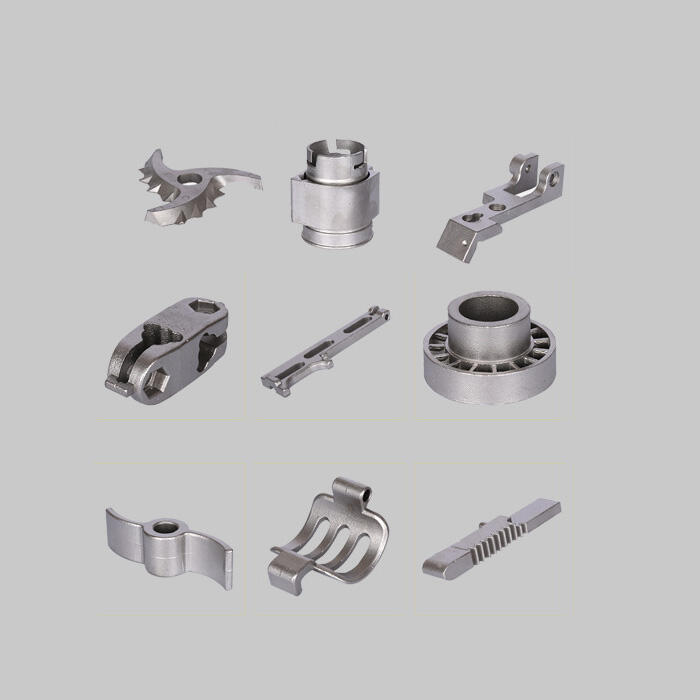Einführung
In der Besetzung , wird Metall unter Druck in eine Form eingespritzt. Das Verfahren wird weit verbreitet für die Herstellung von Präzisionsteilen mit feinen Oberflächen verwendet. Die Konstruktion dieser Komponenten ist entscheidend für den Erfolg des Prozesses der Druckguss - Ich weiß. In diesem Artikel werden die Konstruktionsmerkmale im Lichte der Entwicklung und des Gießens von hochwertigen Druckmaschinen untersucht. Insbesondere werden wir die wichtigsten Erwägungen untersuchen, die Fachleute bei der Herstellung eines Teils für das Druckgussverfahren berücksichtigen sollten, wenn sie optimale Ergebnisse erzielen wollen. Wenn Sie diese Faktoren berücksichtigen, können Sie erfolgreiche Ergebnisse erzielen, die effizient und gut für die Bedürfnisse Ihrer Produktion geeignet sind.
Materialauswahl
Die erste und wichtigste Entscheidung bei der Konstruktion von Druckgussteilen ist die Auswahl des geeigneten Materials. Zu den häufigsten Metallen, die beim Druckguss verwendet werden, gehören Aluminium, Magnesium, Zink und Kupferlegierungen. Jedes Material hat seine eigenen einzigartigen Eigenschaften wie Festig
Teilgeometrie
Die Geometrie des Teils ist ein entscheidender Faktor bei der Konstruktion von Druckguss. Während Druckguss komplexe Designs ermöglicht, muss darauf geachtet werden, dass das Teil ohne Defekte gegossen werden kann. Die Wandstärke ist ein wichtiger Punkt; sie bestimmt die Festigkeit des Teils und die Zeit
Toleranzen und Oberflächenveredelung
Da Druckguss Teile mit engen Toleranzen und einer glatten Oberflächenverarbeitung herstellen kann, kann die mögliche Genauigkeit der erhaltenen Elektrodepositionen auf einen Blick gesehen werden: dies ist 0 Grad. aber die erreichbare Toleranz hängt von der Konstruktion des Teils, dem Gussverfahren und den verwend
Kern- und Hohlraumkonstruktion
Es ist die Kern- und Hohlraumgestaltung innerhalb einer Form, die die inneren und äußeren Merkmale eines Objekts bestimmt. Der Kern ist der Teil der Form, der intern geformt wird, so dass er sowohl Druck als auch Hitze des Druckgusses effektiv aushalten muss. Ähnlich muss die Hohlraumform
Werkzeugbau und Formgestaltung
Die Lebensdauer der Form ist ein wichtiger Faktor, der die Wirtschaftlichkeit des Druckgussens beeinflusst. Die Form muss für die hohen Druck- und Temperaturen des Druckgussens konzipiert werden, was oft zur Verwendung von hochfesten Stählen führt. Die Materialauswahl für die Form kann die Qualität
Einführung von Vorhaben
Die Zykluszeit ist ein entscheidender Faktor für die Produktionseffizienz und je schneller diese Zyklen sind, desto höher ist Ihr Ausgabenaufkommen pro Stundeneinheit. Die Integration von Automatisierung und Robotern könnte die Konsistenz verbessern und gleichzeitig die Arbeitskosten senken. Qualitätskontrolle
Nachgussarbeiten
Nach dem Gießprozess müssen typischerweise zusätzliche Operationen wie Strippen, Bearbeiten oder Wärmebehandlung durchgeführt werden. Die Gestaltung des Werkstücks sollte solche Anwendungen nach dem Gießen berücksichtigen, um Kosten zu minimieren und sicherzustellen, dass das fertige Stück den Spezifikationen entspricht. Montage und
Kostenanalyse
Die Kosten für Werkzeuge sind erheblich und die Materialkosten können je nach Metallart beträchtlich sein. Auch Produktionskosten, die sich auf Arbeitskraft, Energie und Materialabfälle beziehen, müssen berücksichtigt werden. Die Lebenszykluskostenanalyse kann helfen, potenzielle Einsparungen oder Kosten im Zusammenhang mit der Konstruktion des Teils
Umwelt- und Nachhaltigkeitsfaktoren
Umwelt- und Nachhaltigkeitsaspekte sind in der heutigen Herstellung immer wichtiger. Die Quelle der Materialien sollte ihre Auswirkungen auf die Umwelt berücksichtigen, während das Recyclingpotenzial eines Materials immer berücksichtigt werden sollte. Der Energieverbrauch während des Gießprozesses muss auf ein Minimum reduziert und Maßnahmen zur Abfall
Schlussfolgerung
Ein Wort: Design für die kundenspezifische Druckgussart bedeutet nicht nur die Auswahl von Materialien und Betriebsprozessen, sondern auch die Berücksichtigung dieser zahlreichen Fragen. Ein ganzheitlicher Ansatz, der von Anfang an die Auswirkungen auf die Umwelt berücksichtigt, ist entscheidend.

